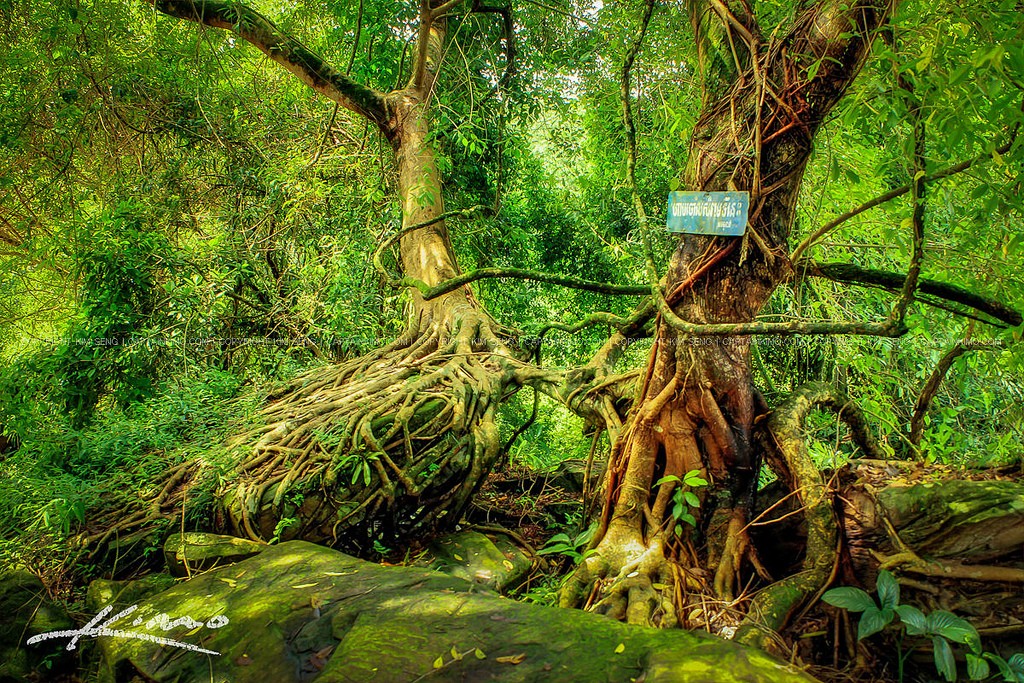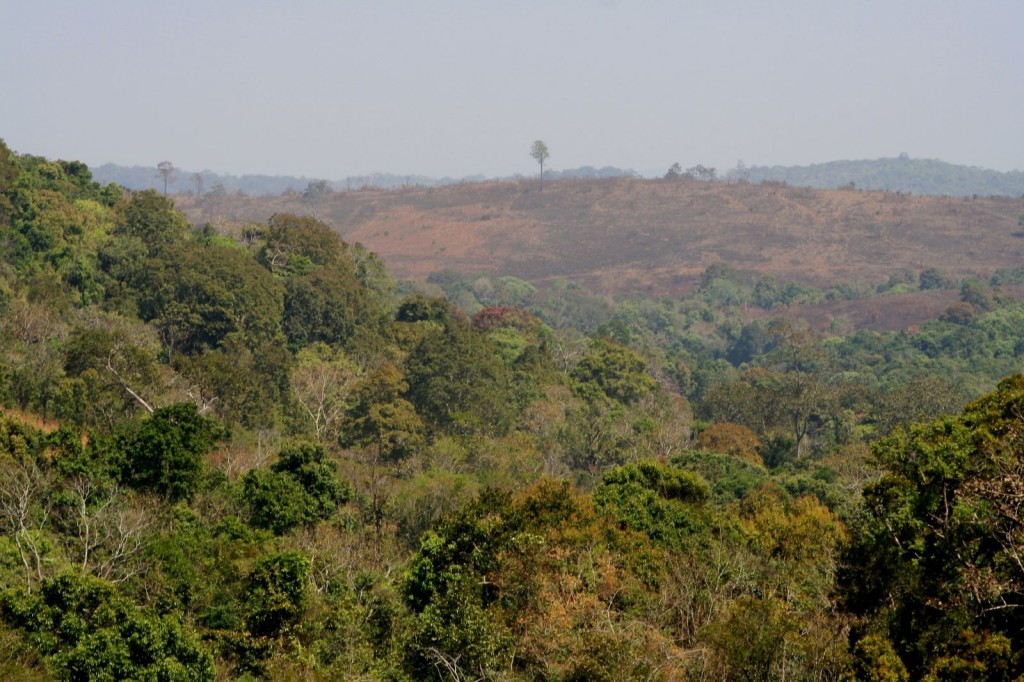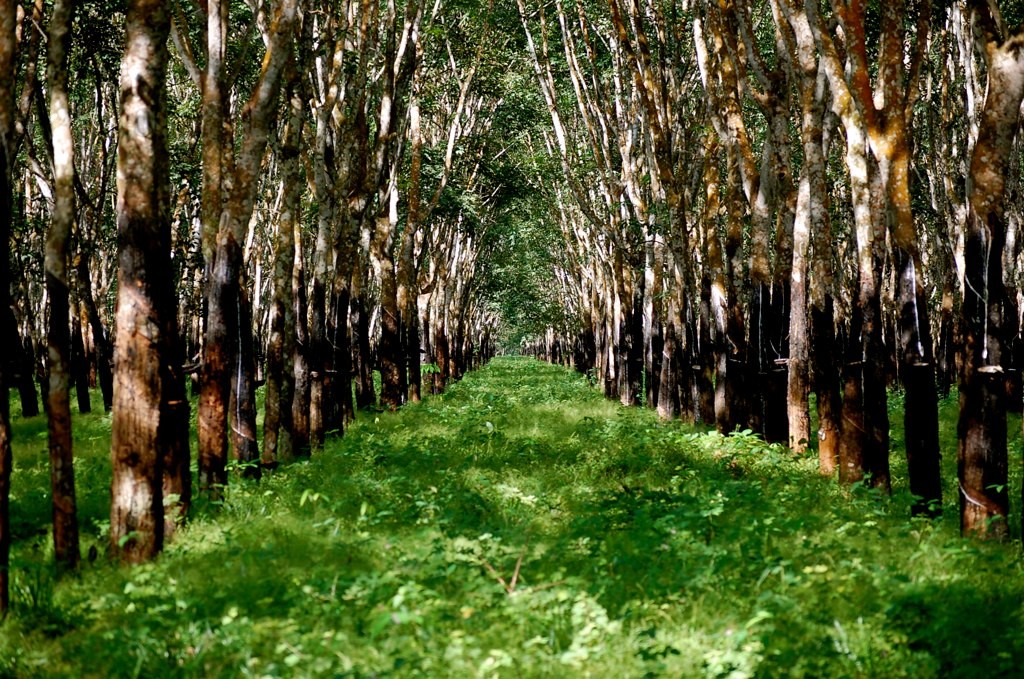Defining and measuring forests is not an easy business. Definitions that initially sound very similar can turn out to have crucial differences. Understanding the terms is important for understanding forest use, forest cover, forest laws and policies and deforestation.
Jungle in Kbal Chhay, Sihanouk province, Cambodia. Photo by Kim Seng, taken on 17 December 2011. Licensed under CC BY-NC-ND 2.0.
Afforestation
The conversion from other land uses into forest, or the increase of the canopy cover to above a 10% threshold.
Canopy
The layer of leaves, stems and branches of trees that cover the view of the ground when seen from above. Often described as a percentage – 50% canopy cover means that 50% of the ground cannot be seen because of the trees.
Closed forest
A forest with tree canopy cover of 60–100%.
Deciduous forest
A forest mostly made up of deciduous trees that drop and regrow their leaves seasonally.
Deforestation
The conversion of forest to another land use or the long-term reduction of the tree canopy cover below a minimum 10% threshold. Clearing or harvesting timber from forest areas is not considered deforestation if the land use does not immediately change.
Dense forest
Areas classified as dense forest in ODC’s maps include evergreen forest and semi-evergreen forest as defined in the Forestry Administration’s Cambodia Forest Cover publication (June 2010). Dense forest is mostly located higher than 500 meters. Dense forest may also be called old-growth forest. The definition allows for limited signs of human occupation, such as small settlements of indigenous people in the forest (which the ‘primary forest’ definition does not). As part of their independent analysis of ODC’s 2014 forest cover data, Global Forest Watch stated that dense forest has tree canopy cover greater than 60 percent.
Evergreen forest
Forest comprising trees that do not lose and regrow their leaves seasonally.
Forest
Land with canopy cover greater than 10 percent and area of more than 0.5 hectares. The trees should be able to reach a minimum height of 5 meters at maturity.
Forest cover
The area of land covered by tree canopy.
Mixed forest
Mondolkiri mixed forest. Photo by Mark, taken on 31 January 2007. Licensed under CC BY-NC 2.0.
Primarily regarded as dry mixed deciduous forest. Mixed forest may also include regrowth forest, stunted forest, mangroves, inundated or flooded forest, and bamboo, as well as forest plantations growing rubber, acacia, and eucalyptus or other tree crops. Areas classified as mixed forest in ODC maps include deciduous forest and ‘other forest’ as defined in the Forestry Administration’s Cambodia Forest Cover. It also includes grassland and ‘wood shrub land evergreen and wood shrub land dry’ included in the non-forest classification of the same publication.
Non-forest
Non-forest is not dense forest, mixed forest, water or cloud. Non-forest includes urban areas, field crops, fallow or barren land, and other human-impacted areas. Areas classified as non-forest in ODC maps align with non-forests as defined in the Forestry Administration’s Cambodia Forest Cover, with the exception of grass land and wood shrub land (evergreen) and wood shrub land (dry), which were included in mixed forest.
Old-growth forest
A forest without significant disturbance for at least 100–150 years, with the presence of old trees, a multi-layered canopy, the presence of woody debris, standings and fallen dead trees (snags) which provide diverse wildlife habitat.
Open forest
A forest where tree cover is 10–40%.
Plantation
Rubber plantation in Cambodia. Photo by Irayani Queencyputri, taken on 8 November 2009. Licensed under CC BY-NC 2.0.
Forests established by planting and/or seeding to create new forest areas or for reforestation and can include either introduced or native tree species. Plantations are often managed for commercial timber harvest.
Planted forest
Planted forests are made up of plantations (such as rubber, acacia, eucalyptus) and the planted component of semi-natural forests.
Primary forest
Forests of native tree species where there are no clearly visible indications of human activities and the ecological processes are not significantly disturbed. (A forest of broadly similar tree makeup but with a human presence, such as small indigenous communities, is called dense forest.)
Protected Areas
Areas of special value to Cambodia because of their resources, diversity or cultural heritage, and defined by the Protected Areas Royal Decree in 1993, and further detailed in the Protected Areas Law of 2008.
Regenerated forest (or reforestation)
Planting trees on land that was forested before, but had fallen below the 10% forest cover definition.
Secondary forest
Regenerated or native forest that has been cleared, such as for agriculture or ranching. This forest displays a major difference in forest structure and/or species composition compared to primary forests.
Wooded area
Land that meets all other requirements of the forest definition but has only 5–10% canopy cover.
Last updated: 22 September 2015




